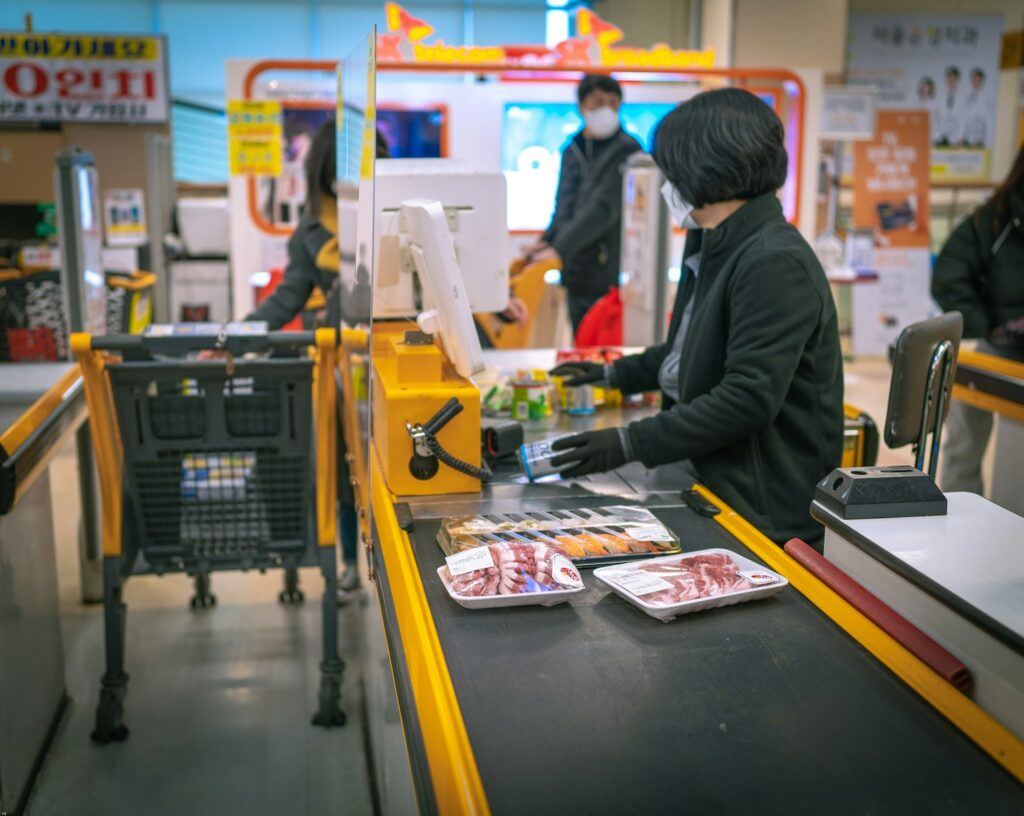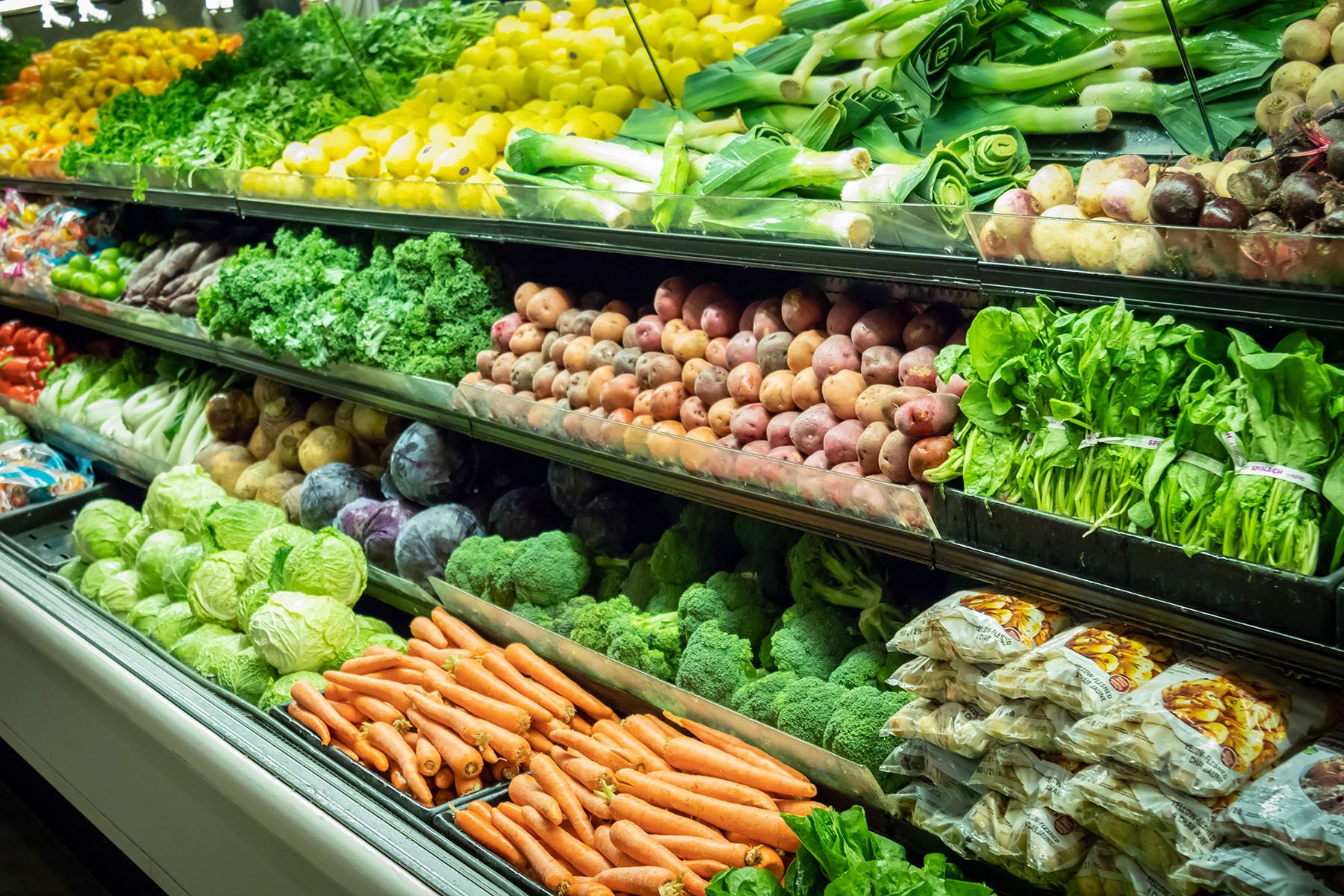
Have you ever left the grocery store only to find that you spent half your paycheck on items you didn’t even need? It’s a scenario many of us know all too well, a moment of bewildered realization as we unpack groceries we hadn’t planned on buying. It is incredibly easy to overspend in the grocery store, and it’s something we’re all guilty of.
But here’s the crucial insight: this isn’t solely your fault. Impulse purchasing represents a much larger component of consumer behavior than people realize, and it’s something shrewd marketers have perfected. With the average American spending about $504 on groceries per month, there’s a good chance you might be inadvertently falling for some clever grocery store traps designed to make you buy more and spend more.
These aren’t accidental occurrences; they are meticulously planned strategies. Supermarkets are full of traps designed to influence your purchasing decisions, often without you even noticing. By understanding these common tactics, you can take control, shop smarter, and keep your hard-earned money in your pocket. Let’s delve into the first seven of these ingenious, yet often overlooked, supermarket spending traps.
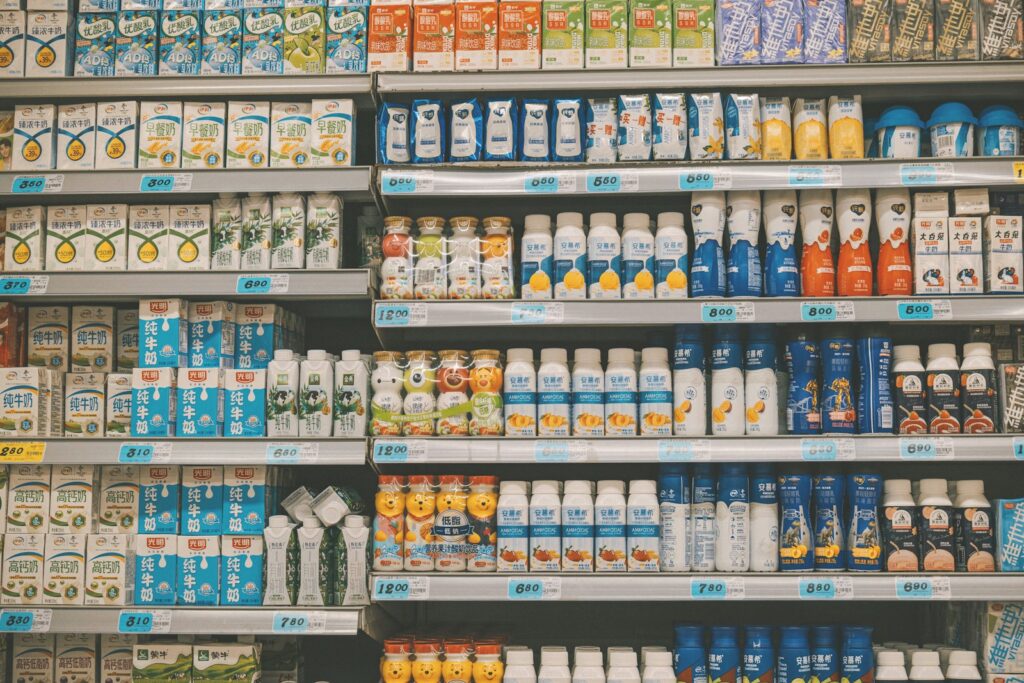
1. **Strategic Placement of Essentials**:Did you ever notice how everyday staples like milk, eggs, and bread are almost always located at the very back of the grocery store? This isn’t a mere coincidence or an oversight in layout design. It’s a highly intentional placement on behalf of grocery store giants everywhere, a foundational strategy to maximize your exposure to other products.
By positioning these essentials in the furthest reaches of the store, retailers ensure you must traverse dozens of tempting aisles. This forced journey exposes you to an array of snacks, baked goods, and packaged foods that you likely didn’t come in for, or perhaps didn’t even know you wanted. The longer you spend inside and the more products your eyes scan, the more likely you are to add something unplanned to your cart, which inevitably increases your grocery bill.
Conversely, the produce section is often right inside the front doors. While it presents all those healthy fruits and vegetables we know we should be eating, there’s a deeper motive. The idea is that you’ll feel so proud of your healthy initial purchases that you’ll subconsciously feel it’s okay to “reward” yourself with less healthy options as you move through the rest of the store, effectively balancing out your perceived virtue with subsequent indulgences.

2. **The Ever-Growing Cart Size Manipulation**: Take a moment to compare today’s shopping carts to those from decades past. You’ll quickly notice a dramatic difference: modern carts are almost three times the size of their predecessors. This isn’t about accommodating larger families or bulk purchases; it’s a subtle, yet highly effective, supermarket trap designed to make you spend more.
A larger cart creates a powerful illusion: that you haven’t picked up much. Despite accumulating numerous items, the vast empty space in the oversized cart tricks your brain into thinking you need to keep adding more, simply to fill it up. This psychological trick makes you feel like your shopping mission is incomplete until the cart looks adequately full.
Studies have consistently demonstrated the effectiveness of this simple change. Research indicates that merely doubling the size of shopping carts can lead to a staggering 40% more spending. This increase occurs simply because your cart doesn’t “look full” to your subconscious, compelling you to purchase items you don’t genuinely need, all in an effort to fill that ever-expanding space.
3. **The Irresistible Allure of Checkout Impulse Buys**: Those seemingly innocuous little shelves located right at the checkout, brimming with gum, candy bars, magazines, and energy shots, are far from incidental. In the retail world, these are considered gold mines for stores, strategically placed to capitalize on your weakened willpower. The sheer volume of sales from this area is astounding, with people spending billions each year in the checkout area alone.
The question then becomes, why are we so incredibly inclined to grab a pack of gum or a candy bar when standing in line? The answer lies in your mental state at the end of a shopping trip. By the time you reach the checkout, you are likely tired, and your brain is experiencing what’s known as “decision-fatigue.” After navigating numerous choices throughout the store, your self-control is significantly reduced.
In this state of reduced self-control, a small, sweet treat or an instant pick-me-up feels like a well-deserved reward for the shopping ordeal. Impulse purchases spike dramatically near checkout due to this widespread experience of diminished self-control. Supermarkets know this, and they expertly position low-cost, high-margin temptations precisely where your defenses are lowest, encouraging you to add just one more item to your total.

4. **The Free Sample & Guilt-Driven Purchase Loop**: A free sample can feel like a delightful little treat, a pleasant interlude in your shopping expedition. However, it’s crucial to understand that these samples often come with invisible strings attached. Many shoppers find themselves feeling an uncomfortable sense of guilt about not buying a product after they’ve tasted it, particularly if they’ve engaged in a pleasant conversation with the person serving it.
This feeling of obligation, though subtle, is a powerful psychological trigger that stores leverage. It creates a social contract in your mind: you’ve received something, and now you feel a reciprocal pressure to give something back, even if it’s a purchase you hadn’t intended. The interaction with a friendly sample-giver only amplifies this sensation of needing to reciprocate.
But here’s the empowering truth: you absolutely do not have to fall into this guilt trap! If you genuinely like the product and believe it’s something you truly need and will use, then by all means, go ahead and purchase it. However, always be sure to check the price and ensure it aligns with your budget. Never feel pressured or obligated into buying something you didn’t genuinely enjoy or, more importantly, something you cannot comfortably afford. Your budget and needs come first, not an unwritten social contract.

5. **The Deceptive Allure of End Cap Displays**: As you navigate the supermarket aisles, you’ll inevitably encounter products prominently featured at the very end of them. These “end caps” are prime retail real estate, and the items displayed there often appear to be on a fantastic sale. However, this is not always the case, and assuming a deal can lead to unnecessary spending.
These strategic spots are typically reserved for higher-margin items or products that are part of a broader promotional campaign. While some might genuinely be on sale, many are simply positioned for maximum visibility, creating the illusion of a bargain. The convenience of grabbing an item right there, coupled with the subtle suggestion of a good deal, often bypasses critical price comparison.
It is always, always worth taking a few extra steps beyond the end cap. Similar products, or even the exact same product, may be located deeper within the aisle for a significantly better price. Developing the habit of quickly scanning the main shelves for alternatives can help you discover a superior product or, more frequently, a better deal on the item you’re considering.
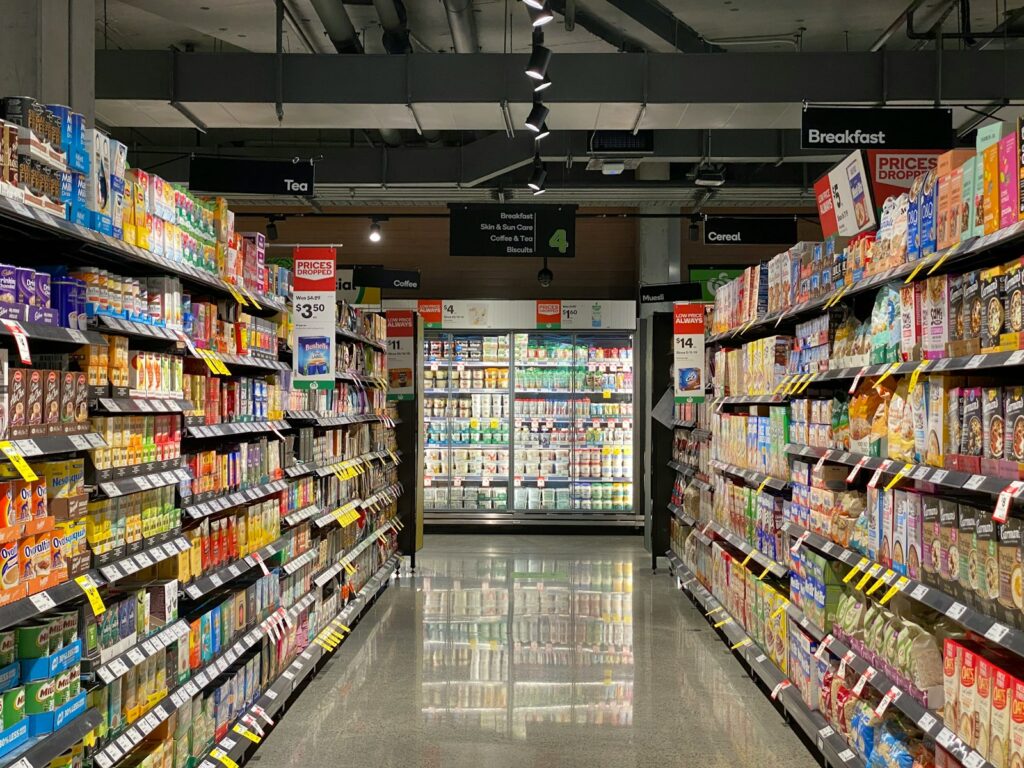
6. **The “Eye-Level is Buy-Level” Pricing Strategy**: Walk down any grocery aisle and pay attention to where your eyes naturally land. You’ll find that the products positioned at eye level are almost always the most expensive or the most prominently advertised brand names. This is not by chance; it’s a well-established retail principle: “eye level is buy level.” Brands actually pay premiums to have their products placed in these highly visible, easily accessible positions because that is precisely where we naturally look first.
Because these prime positions come with higher price tags for the brands, those costs are naturally passed on to you, the consumer. Shoppers, in a hurry or simply not thinking consciously, often grab the first item they see at eye level, assuming convenience equals value, or that the prominent brand is the best option available.
To become a savvier shopper and protect your budget, make it a habit to look beyond the obvious. Always check both the top and bottom shelves. Here, you will frequently discover better deals, store-brand alternatives that offer comparable quality at a lower cost, or larger quantities that may be available at a significantly lower unit cost. A quick scan up and down can lead to substantial savings over time.
Navigating the modern grocery store is akin to traversing a carefully constructed maze, designed with one primary objective: to encourage you to spend more. While the initial seven traps we’ve explored already reveal much about supermarket psychology, there are still more clever pitfalls lurking around every corner. By understanding these additional hidden strategies, you can further empower yourself to shop smarter, resist subtle pressures, and keep your hard-earned money firmly in your pocket. Let’s unveil the remaining seven, arming you with the knowledge to maintain control over your budget and your shopping cart.
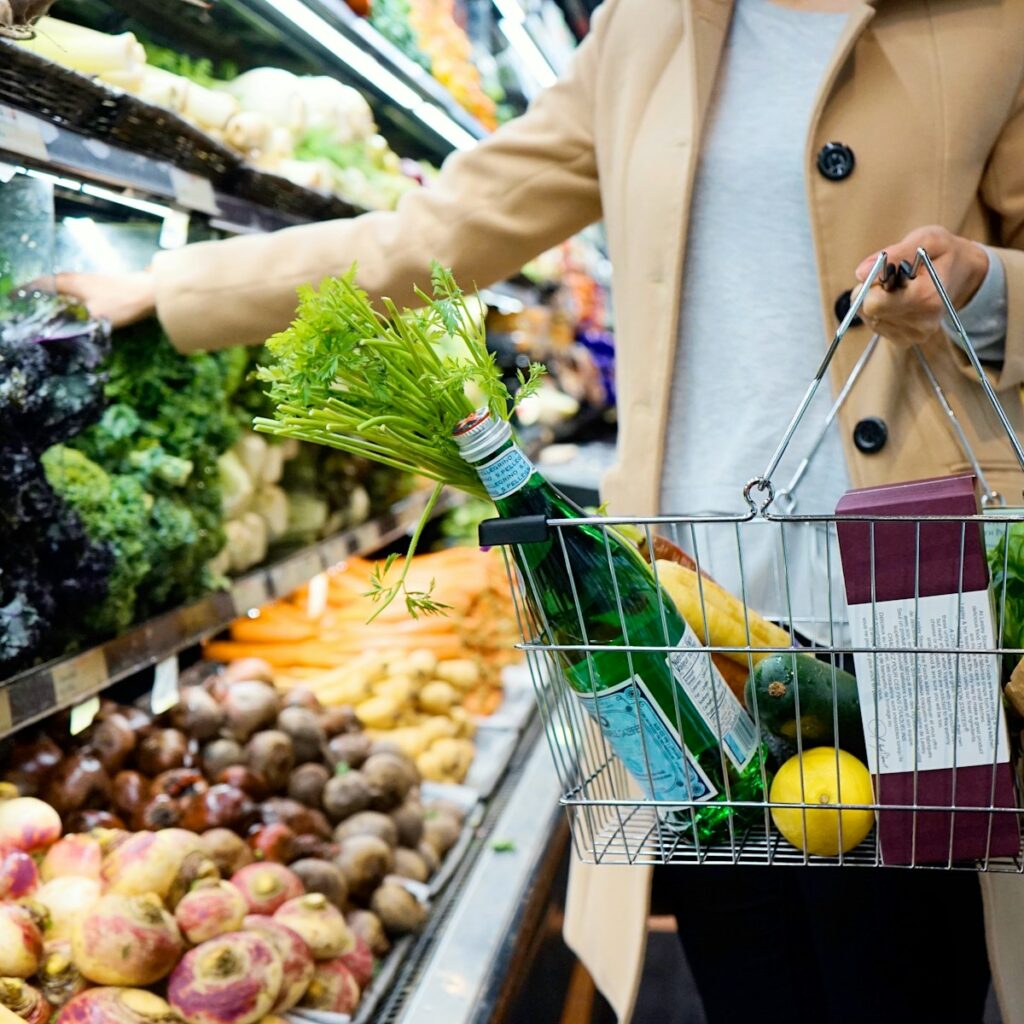
7. **Seasonal Displays Create Fake Urgency**: Have you ever walked into a grocery store in August and already seen pumpkin spice everything lining the shelves, or noticed red, white, and blue chips appearing as early as May? This isn’t just stores being enthusiastic about upcoming holidays; it’s a meticulously crafted strategy to tap into your subconscious desires and create a powerful sense of urgency. These early seasonal displays are designed to make you feel like you need to “be part of the moment,” triggering a fear of missing out (FOMO) on limited-time items.
The goal here is twofold. First, by presenting seasonal items well in advance, supermarkets encourage you to buy them immediately, capitalizing on the novelty and the artificial sense of scarcity. You might think, “Oh, I’ll grab this now before it’s gone!” Second, and more cunningly, stores hope that once you’ve consumed these seasonal snacks or treats ahead of the actual holiday, you’ll feel compelled to repurchase them for the “real” celebration. This subtle tactic effectively doubles your seasonal spending without you even realizing it.
To counteract this, take a moment to pause and consider if you genuinely need these items right now. If it’s still months away from Halloween or Christmas, do you really need those themed candies today? Plan your holiday purchases closer to the actual event, and avoid falling for the psychological trick of premature scarcity. Your pantry, and your wallet, will thank you for it.

8. **Scarcity Language Pressures You**: Nothing screams “buy now!” quite like a sign declaring “Limit 2 Per Customer” or “While Supplies Last.” These phrases are not just informational; they are psychological power tools designed to pressure you into making rapid purchasing decisions. The moment you read such a disclaimer, your brain often triggers a primal fear that the product won’t be available later, creating an artificial sense of urgency that overrides rational thought.
This scarcity language can be incredibly effective, even when there’s actually an abundance of the product in stock. Stores cleverly employ these signs and disclaimers to push you to buy more, or to buy faster, than you normally would. It transforms a leisurely shopping decision into a race against an invisible clock, making you believe that a delay will result in a missed opportunity, leading to impulse purchases you might later regret.
To avoid falling victim to this trick, take a deep breath and assess your true needs. Do you really need two of that item, or would one suffice? Is this product genuinely scarce, or is the store simply trying to create a false sense of demand? Remember, your purchasing decisions should be based on your actual requirements and budget, not on manufactured urgency. Empower yourself by resisting the pressure to buy more than you need.
By arming yourself with the knowledge of these common grocery store traps, you’re not just saving money; you’re reclaiming control over your shopping experience. Each trip to the supermarket becomes an opportunity to outsmart the system, making conscious choices that align with your budget and your needs. Embrace these strategies, and watch your grocery bill shrink, leaving you with more hard-earned cash in your pocket for the things that truly matter. Shop smart, live well, and never let a clever marketing ploy dictate your wallet again!

